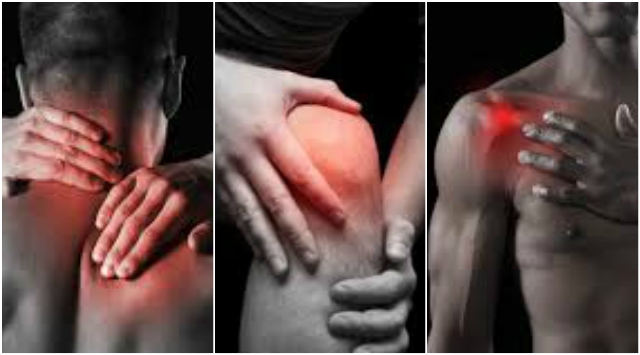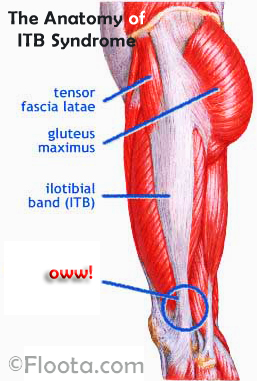Injuring the body while trying to achieve a fitness goal can be a major set-back. It’s annoying as it limits you from achieving your target and it’s also worrying because you are concerned about its severity and how long it would take to get back to your active lifestyle.
How do you know when to wear brace, when to rest the part, when to change your footwear and when to see a physiotherapist? Below is a list of commonly occurring injuries in people with fitness goals. Physiotherapists have been extensively trained to manage ailments and help in rehab without the use medications. For most injuries, the first intervention recommended is usually PRICE: Protection, Rest, Ice, Compression and Elevation. Not heat. Do NOT use heat balm or rub vigorously when you have an acute injury.
Knee Injury
Though there several types of injury which may occur at the knee, “runners knee” or patellofemoral syndrome is one which occurs in people who haven’t had any procedure done before. This happens when there is poor tracking of the patella (knee cap) within the groove in the knee. The pain would usually occur when going down the staircase, running or rising up from a chair after sitting for long periods. For people who have had procedures done on their knees and want to work out actively, there is a lot of concern about re-injuring the knee.
To keep safe: Work on strengthening the muscles in your hip region as these muscles work both the hip and knee and would in turn encourage the patella to remain in the correct position while gliding up and down during movement. Wearing appropriate braces also helps in minimising the stress and distributing the load appropriately.
When to see a physiotherapist: When use of ICE has not resulted in any improvement, when the pain does not seem to be getting better and if you think you need a professional to discuss with your trainers on programme which would not injure your knee after a procedure.
Shoulder injury
The most commonly occurring one is rotator cuff injury. The shoulder has several muscles which wrap around the region snugly. They can easily get injured in activities which involve throwing and improper technique when lifting. Also, doing push ups and press ups with arms rotated inwards could cause shoulder injury.
To keep safe: Keep your hands in front where you can see them. Taking your hands backwards may lead to straining of the muscles and injury.
When to see a physiotherapist: When activities like wearing your shirt, pulling your seatbelt and taking objects over-head seem to make pain worse. Also, when use of PRICE (Protection, Rest, Ice, Compression and Elevation) has not resulted in any improvement and when the pain does not seem to be getting better.
Elbow Injury
Tendinitis or tendinopathy is when the muscles and tendon become injured. Most common elbow injury occurs when the muscles responsible for extending the forearm and wrist, located on the outside of the elbow become injured. Typically, this occurs as a result of repetitive or over use injury.
To keep safe: Using a tennis elbow brace helps to stabilise the region and minimise the friction in the area.
When to see a physiotherapist: When re-injury occurs, if you notice swelling in the area or if the pain persists beyond 6 weeks. It can become notoriously difficult to treat if not corrected with proper technique.
Back strain
This is a broad term to encompass several back related injuries. Since people spend a lot of time sitting at work or in traffic, or using improper lifting techniques, the back unfortunately is often susceptible to injury while working out.
To keep safe: It’s important that you find your neutral spine and start from there before working out. Also, activating your core and using proper techniques go a long way in minimising injury to the region.
When to see a physiotherapist: When pain medications don’t work, or if there is tingling or weakness along your legs or sharp pain with specific movements.
Ankle Sprain
Ankle sprain commonly occurs when people land wrongly on the feet with the ankle in a rolled position. It is also occurs in basketball players because of the repetitive shuffling which puts the ankle at a high risk of injury.
To keep safe: Outdoor runners should be aware of potholes, kerbs and uneven surfaces and avoid routes which may have these. People using treadmills should make sure it comes to a complete stop before stepping off it so as not to loose their balance. Also, basket-ball players need to wear appropriate footwear which protects the ankle while allowing for easy shuffling movements.
When to see a physiotherapist: Ankle sprains can be notoriously difficult to treat. You should ask to see a physiotherapist as soon as the swelling goes down in order to guide you with appropriate rehab program.
Shin Splints
Media Tibia Stress Syndrome, also known as shin splints is used to describe when there is pain along the edge of the inner tibia which typically occurs when there is muscle inflammation. It can occur immediately after running or it may take a bit more time. Using worn-out shoes to run plays a contribution to the occurrence of shin splints.
To keep safe: Wearing appropriate footwear, gradually increasing how you exercise by varying the duration and intensity gradually can help.
When to see a physiotherapist: When the insoles may be required to help the with the occurrence of the shin splint.
IT Band Injury
The Iliotibial Band is a ligament which runs from the pelvis region, outside the knee and attaching to the tibia bone. iliotibial band injury falls under the category of overuse injury/repetitive as it occurs when there is constant friction along it especially where it attaches to the outside of the knee. It can occur both in new runners and old runners.
To keep safe: Changing the direction of running while running (including side stepping), wearing appropriate running shoes and not always running downhill helps to minimise the occurrence of IT band syndrome.
When to see a physiotherapist: When resting it does not give you any relief or stretching it does not make any difference in the level of discomfort.
Do you have any more questions? Why not give us a call on +2348035670888 or +2348171940921 we’d be happy to have a conversation with you about how best we can help.



